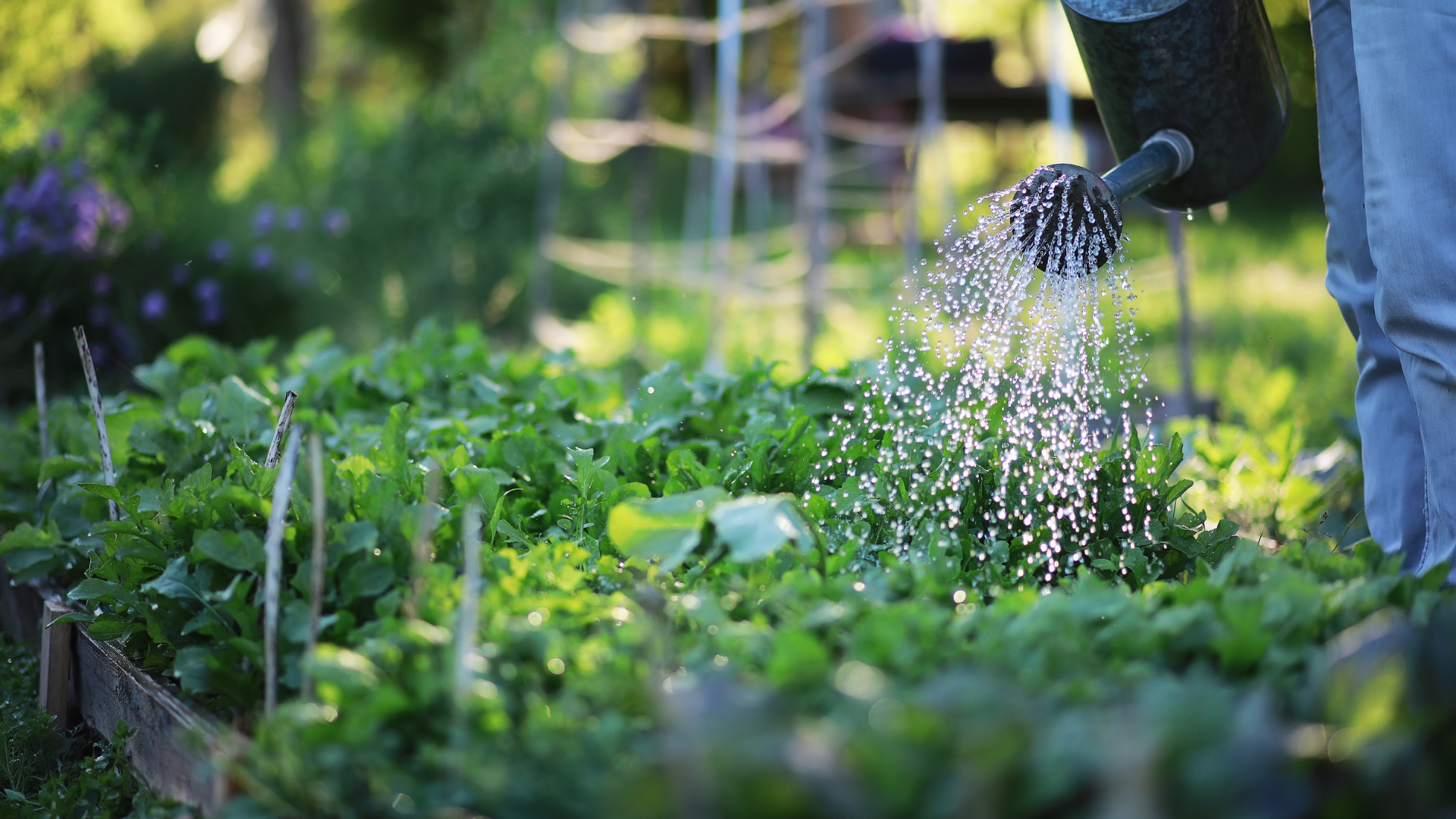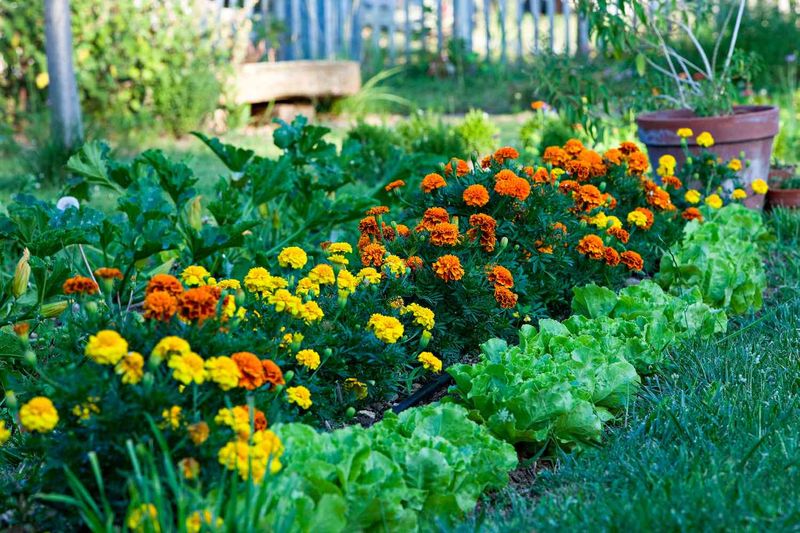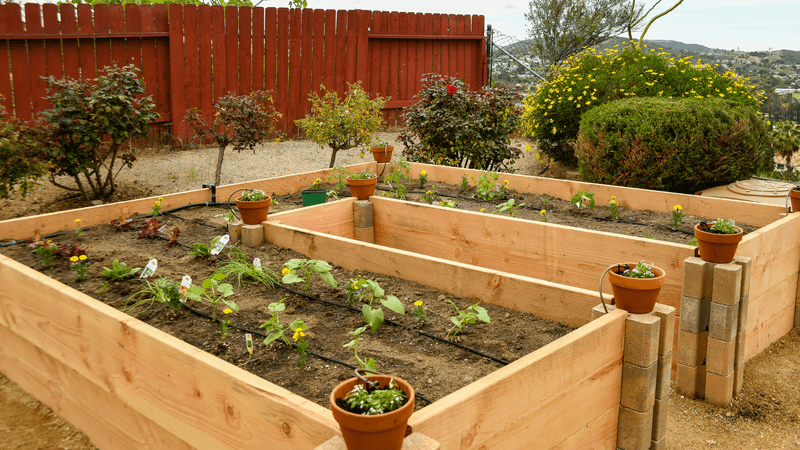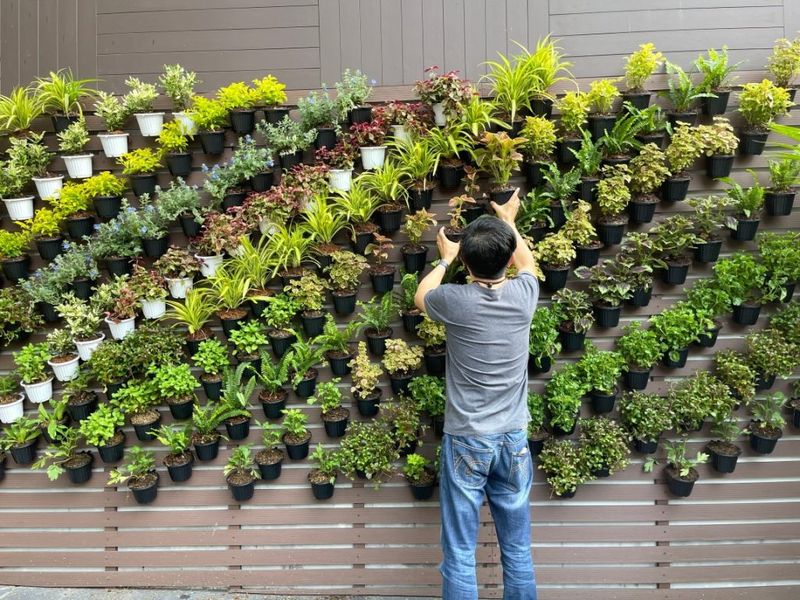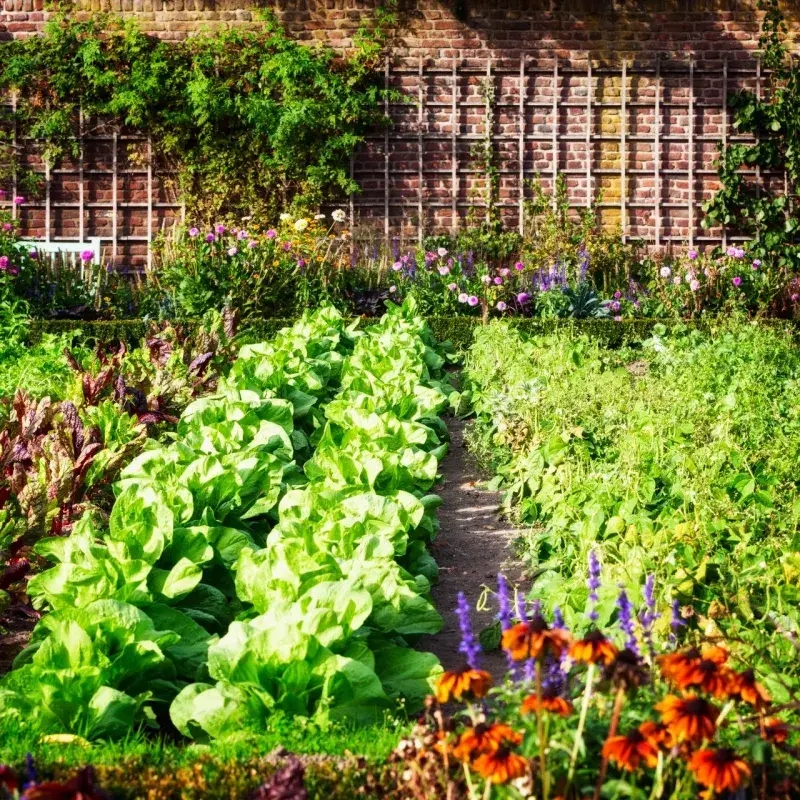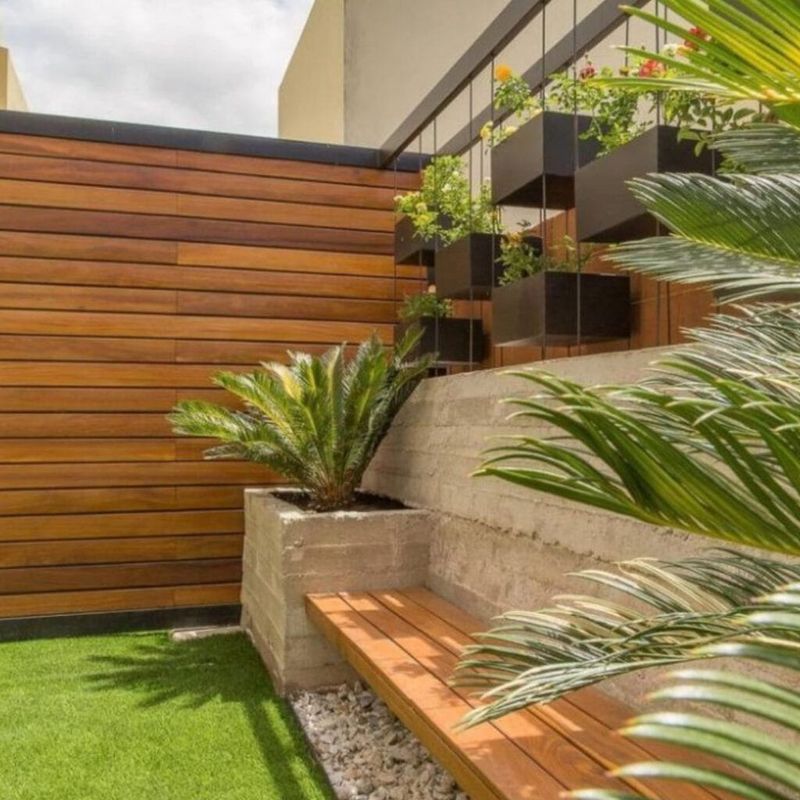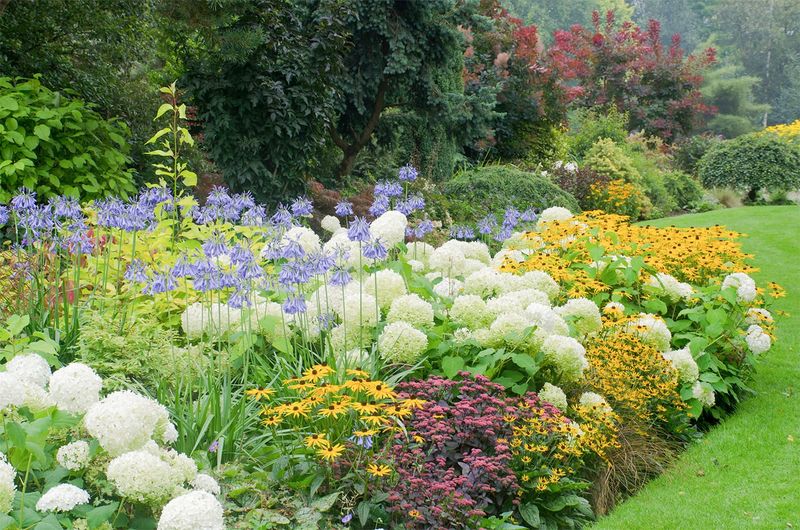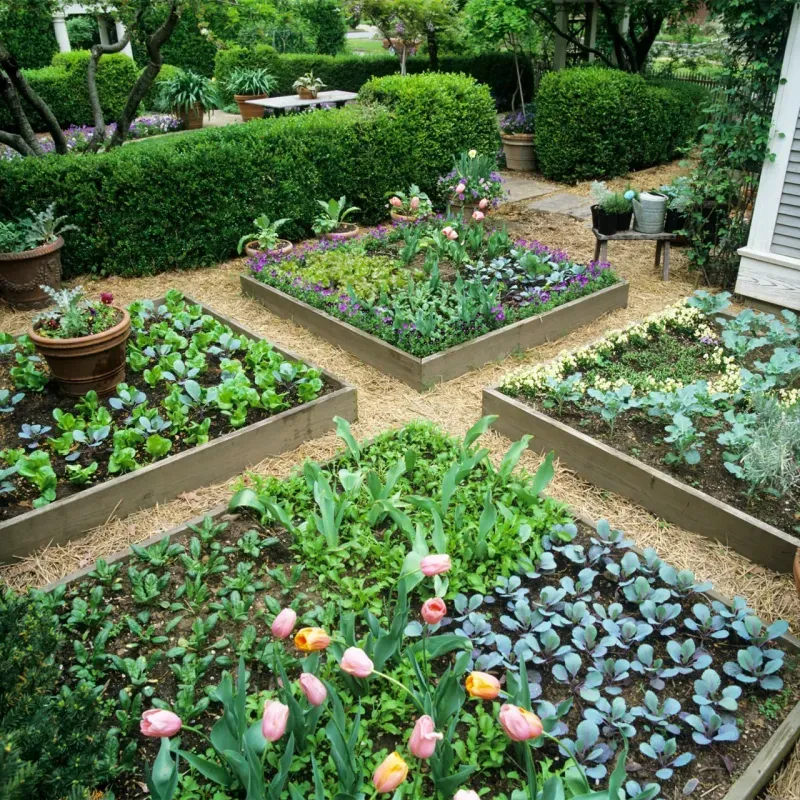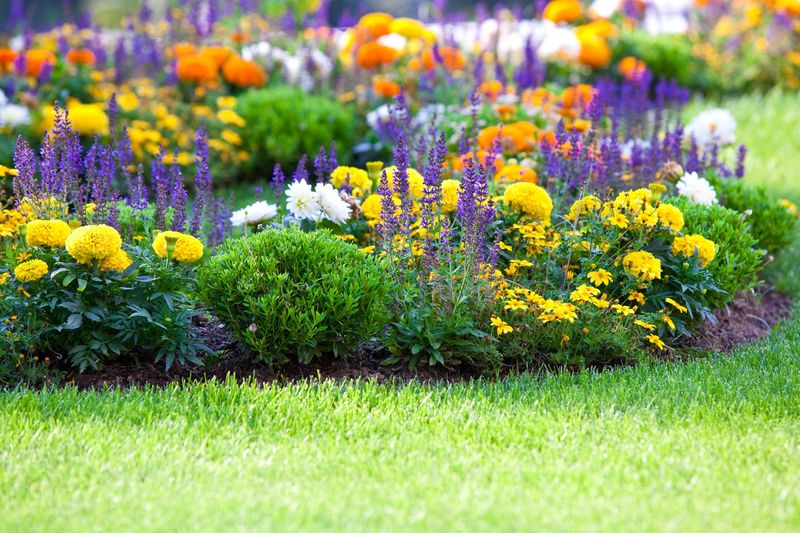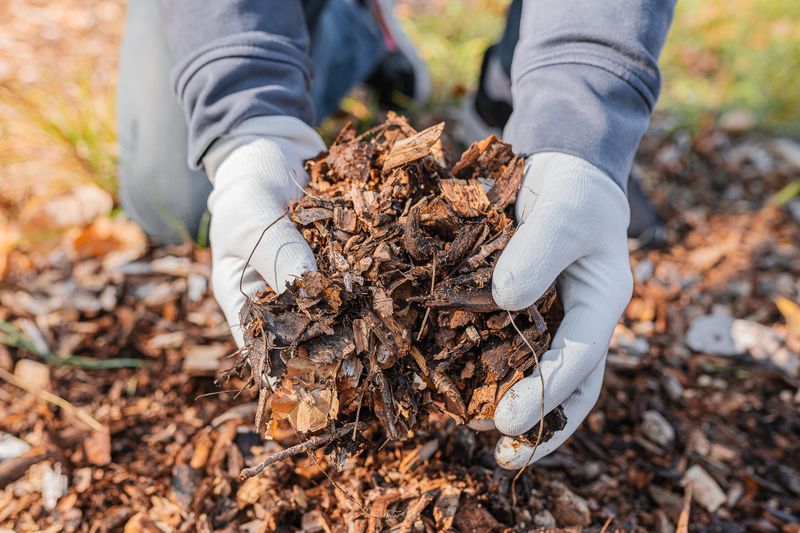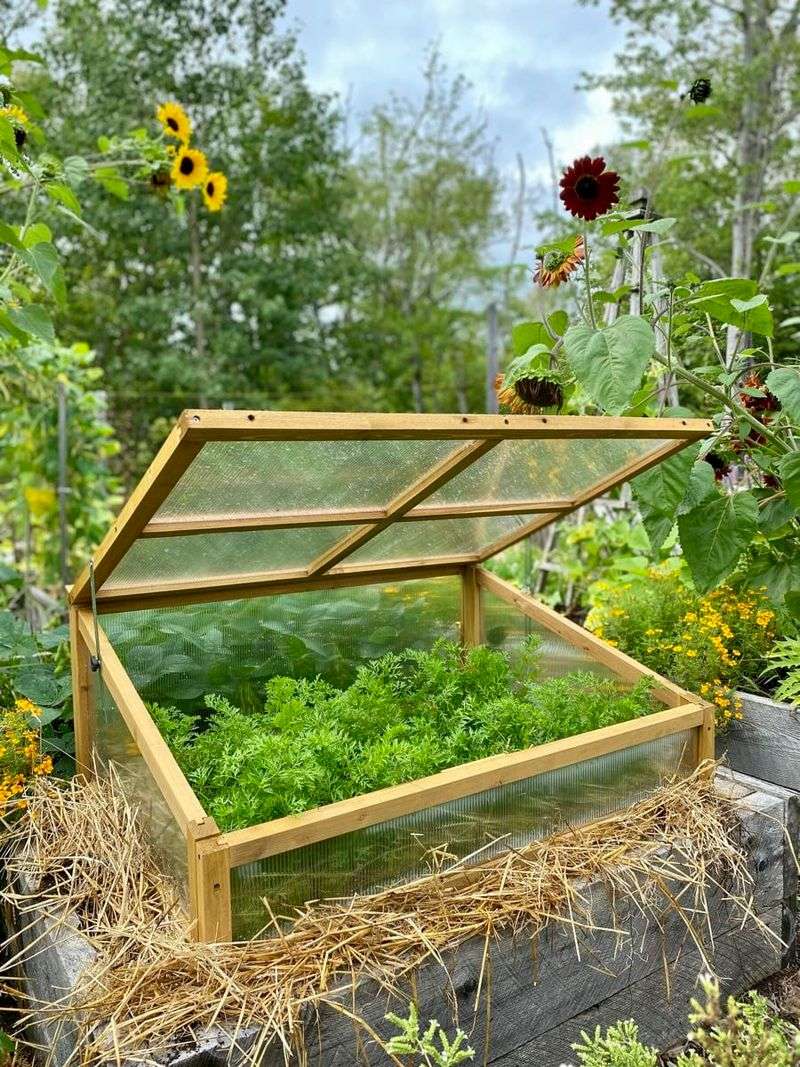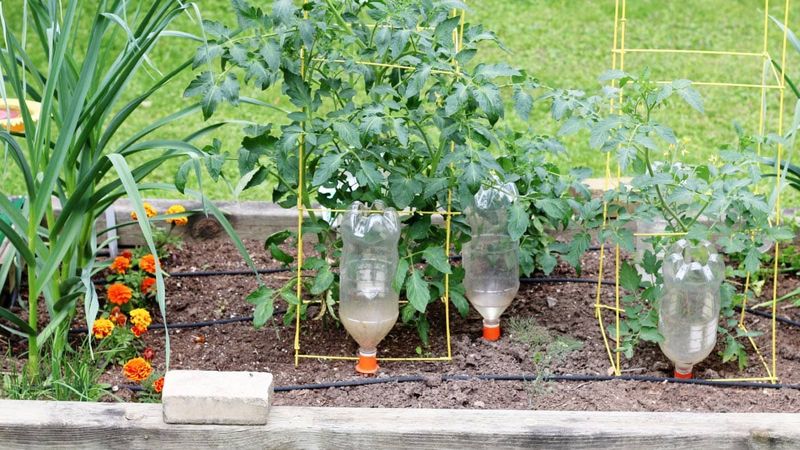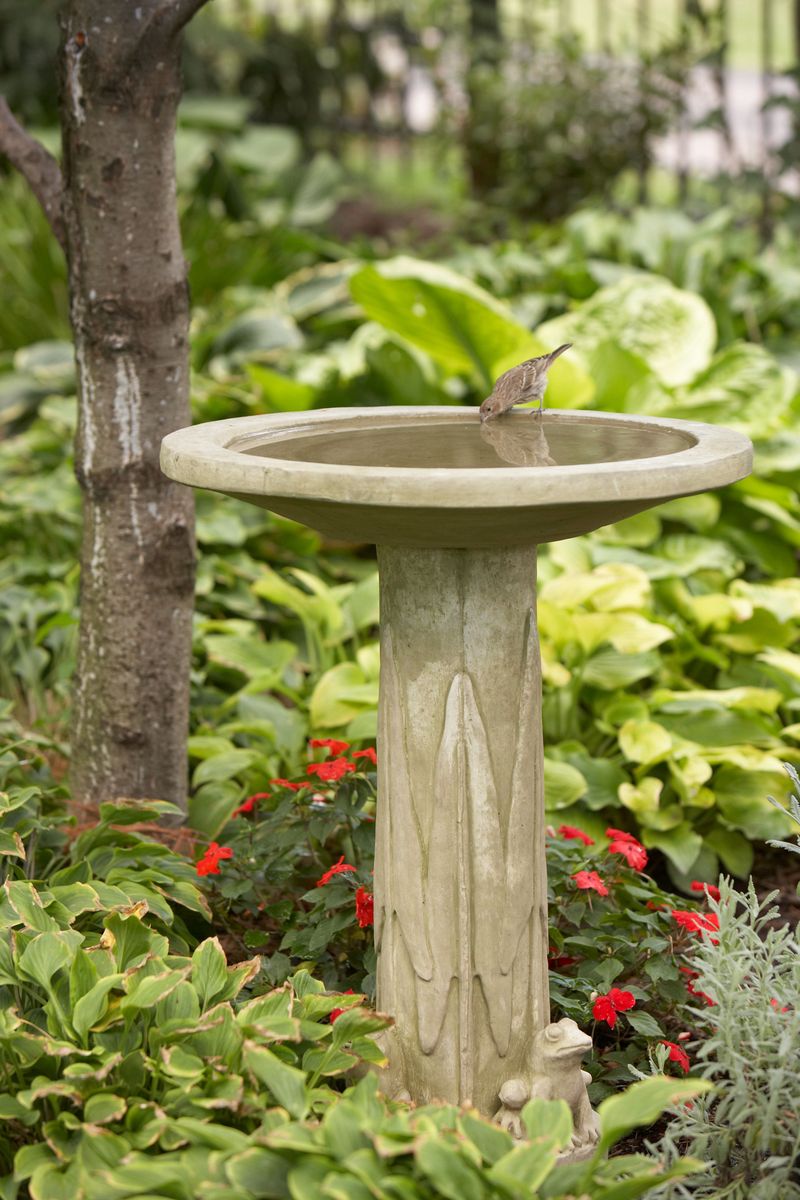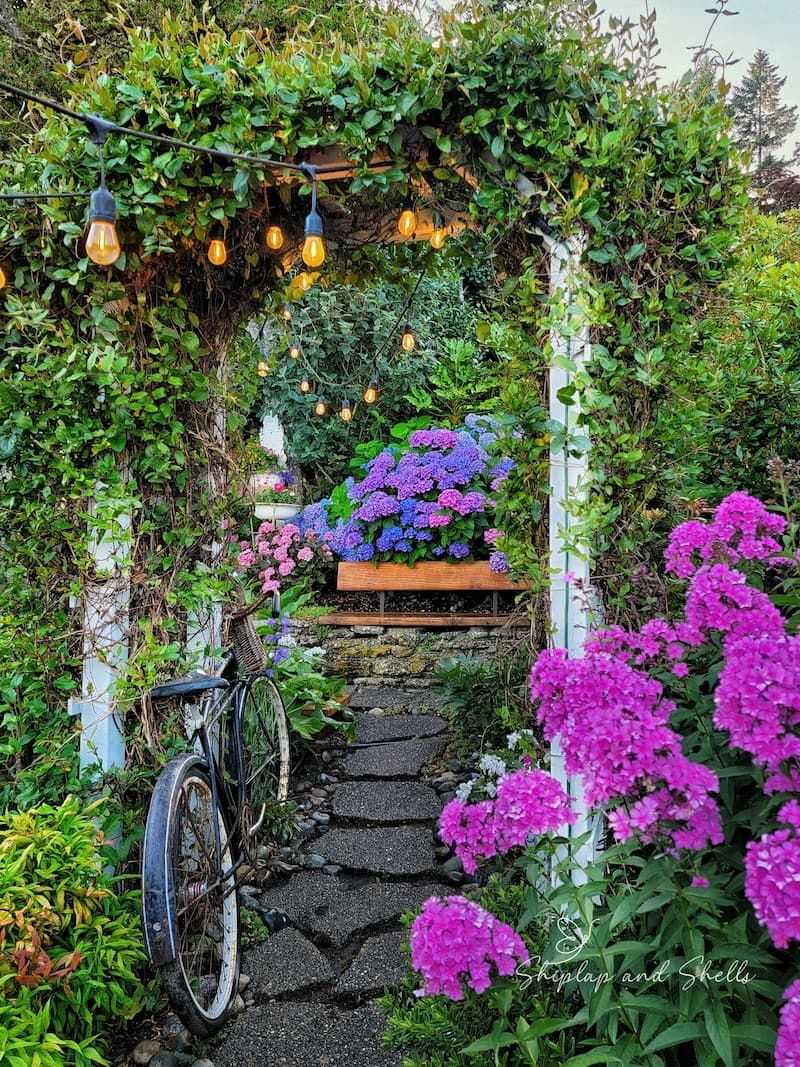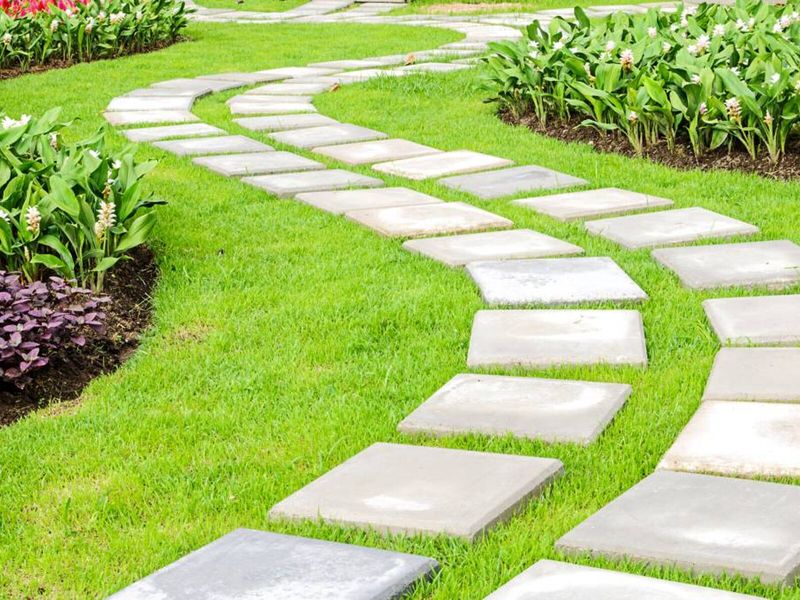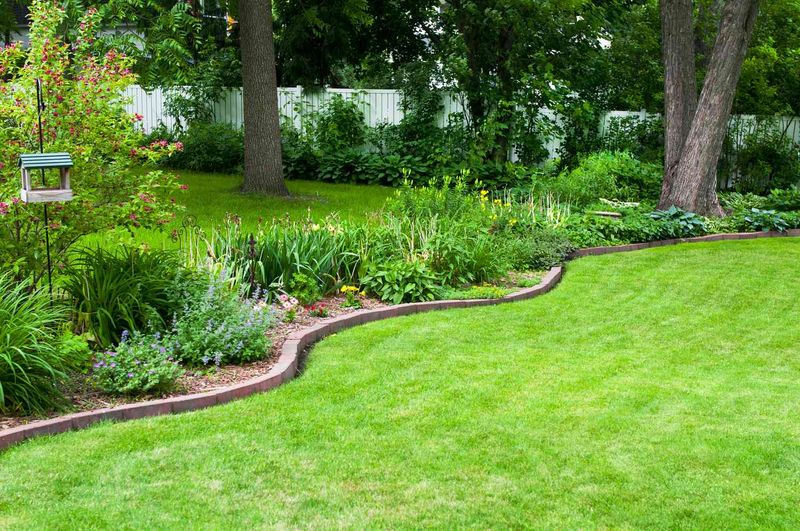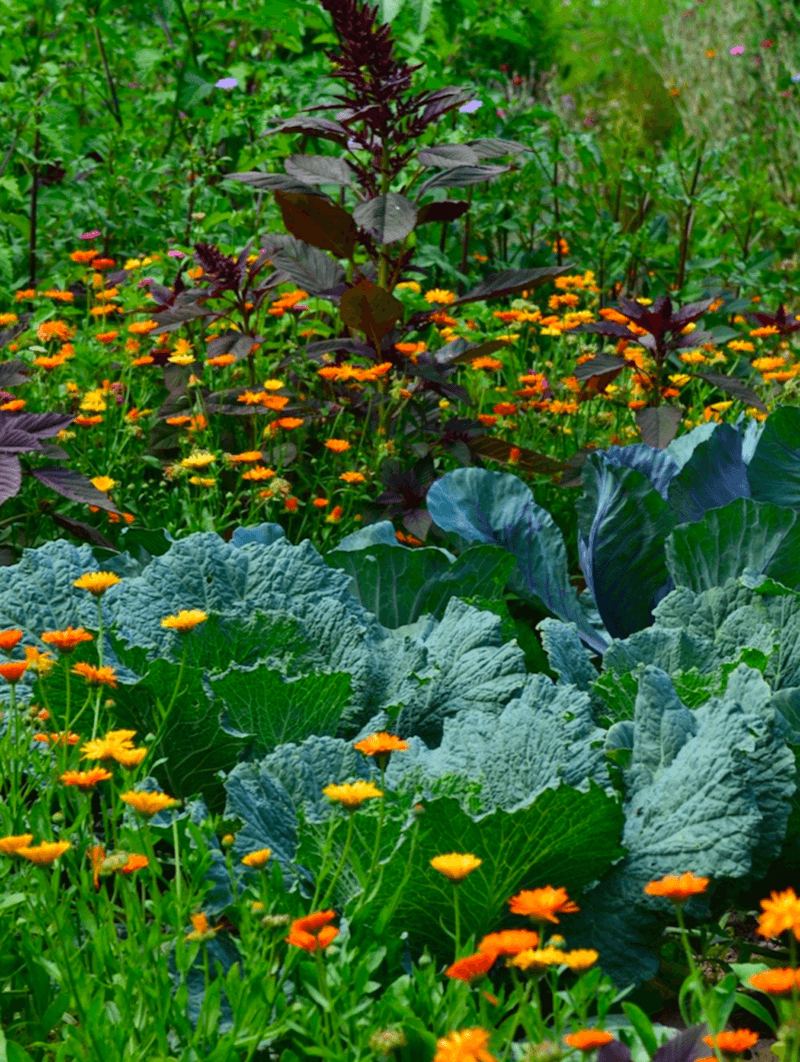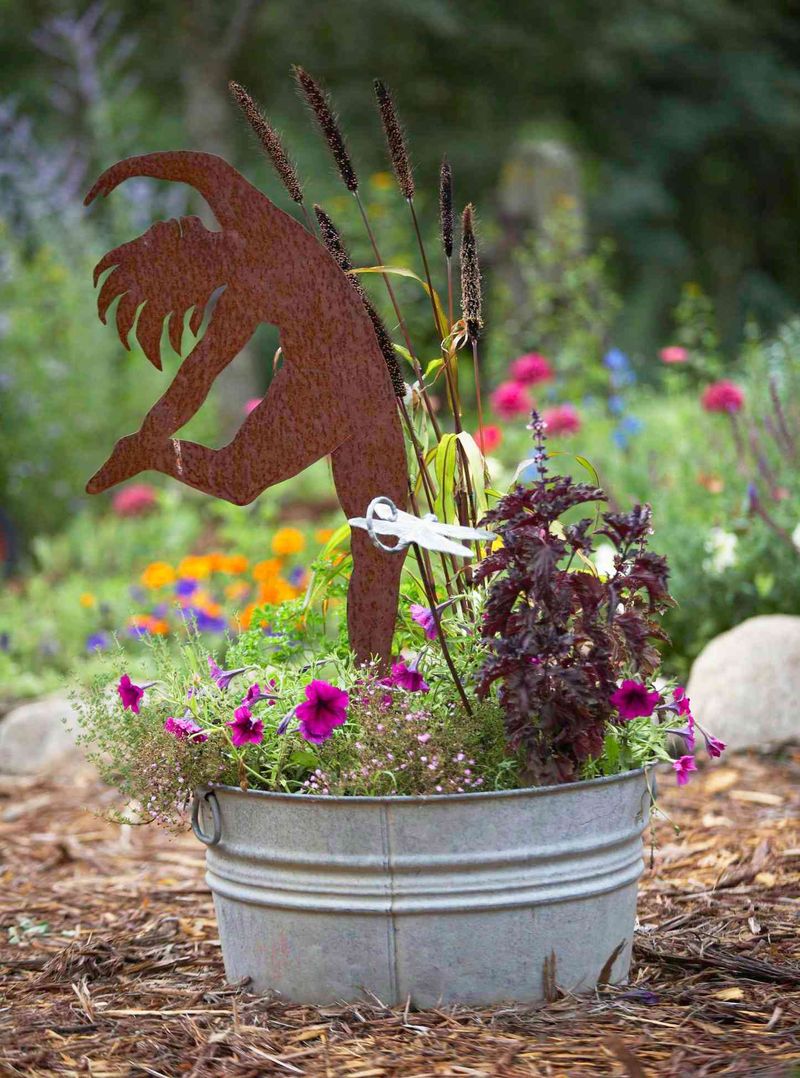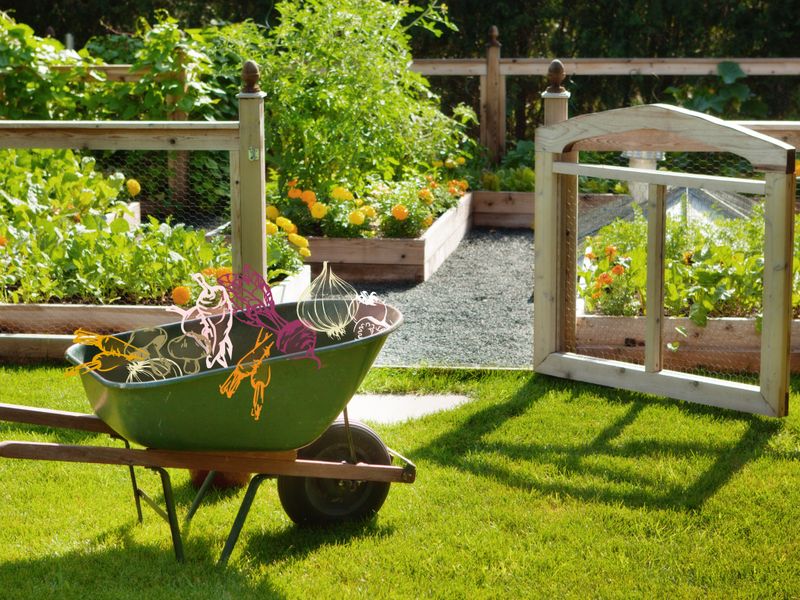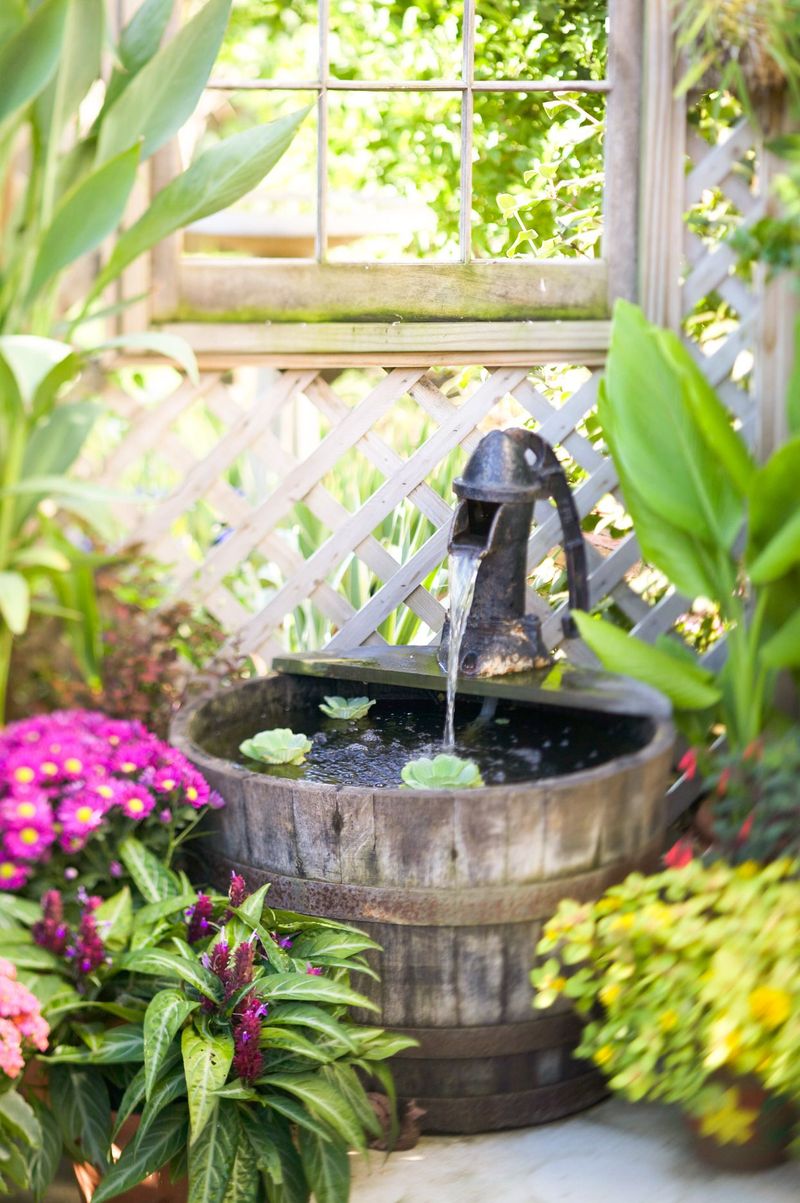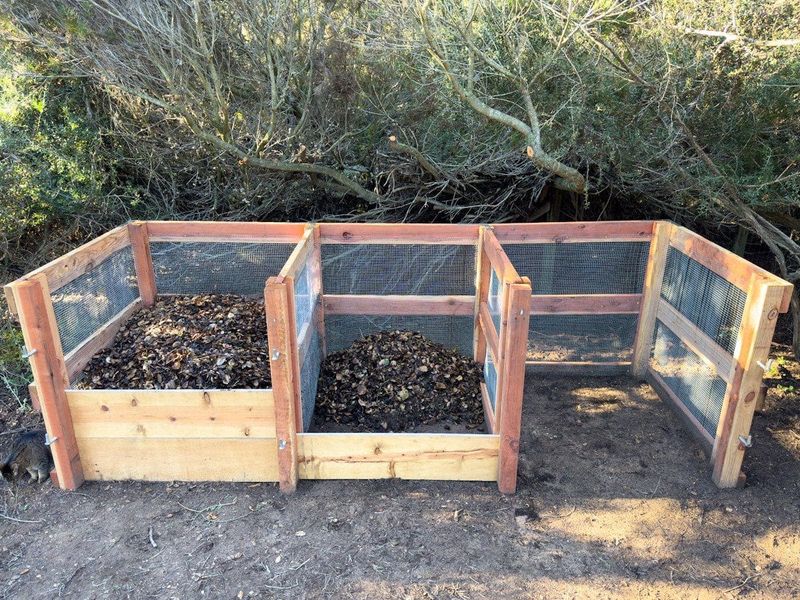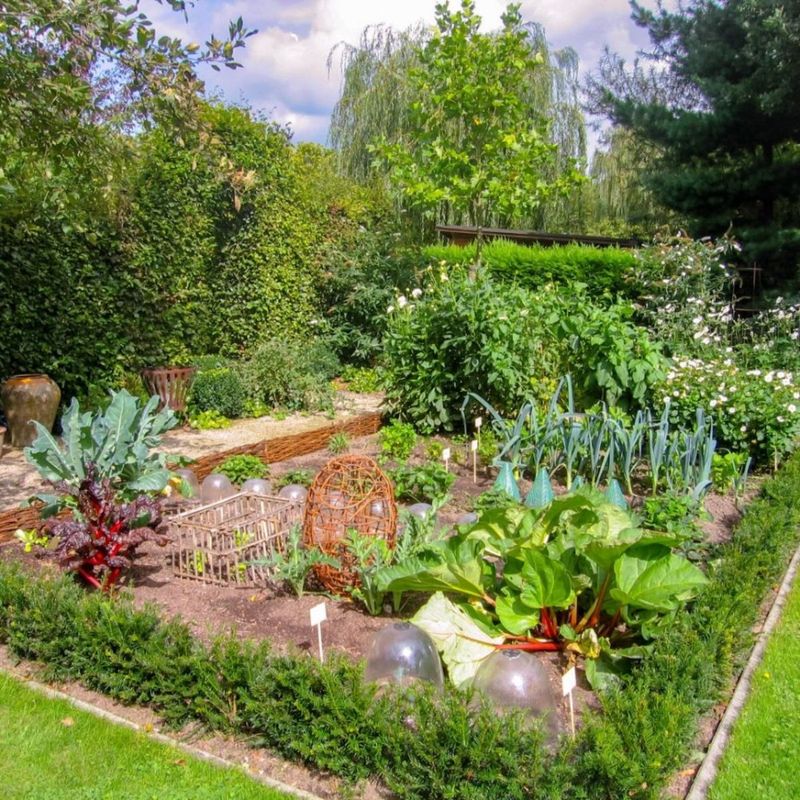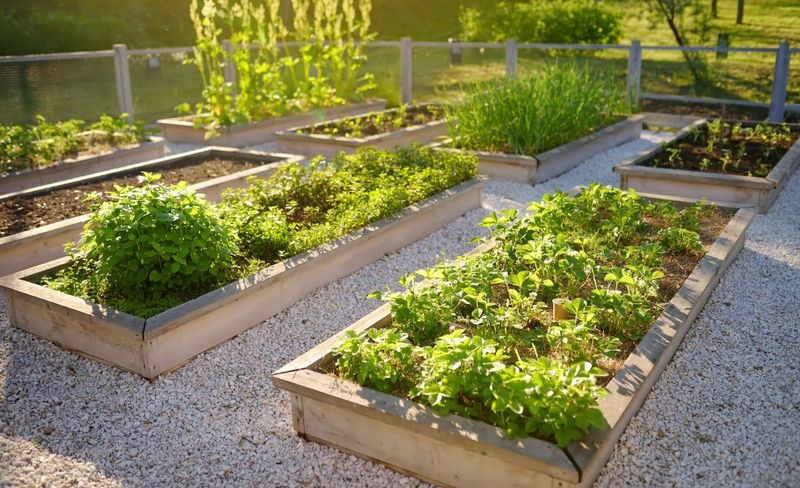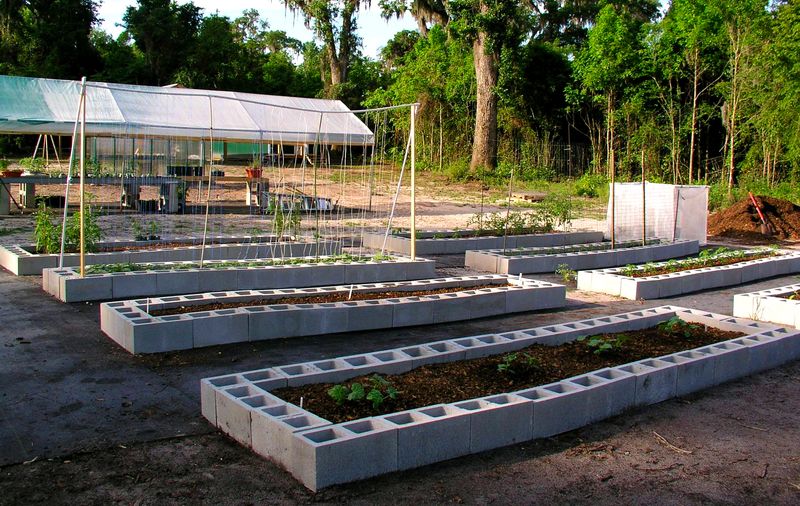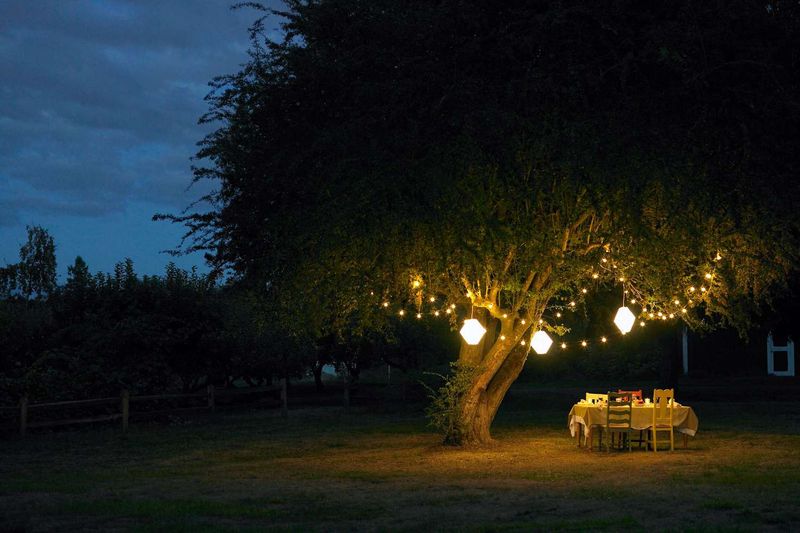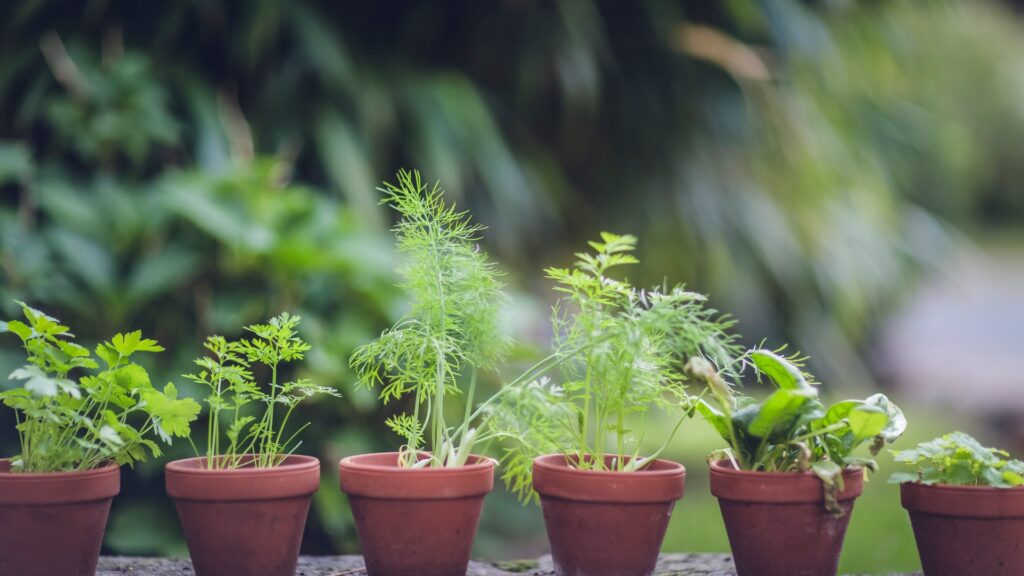Have you ever looked at your backyard and thought, “What if it could feed me, too?” I sure have! I remember planting tomatoes near my fence, thinking they’d just chill and do their thing.
Well, they didn’t. Those little guys exploded into a juicy red wall that took over everything! But hey, it worked! With a bit of creativity and some clever design tricks, your garden can transform into a veggie paradise.
Let’s explore 27 design secrets that can turn your backyard into an abundant harvest—just be ready for some unruly tomato vines!
1. Companion Planting
Imagine a partnership where plants help each other grow. Tomatoes and basil are a classic duo. The basil enhances the flavor and repels pests, making your tomatoes taste like summer itself.
Fish tales have it, these plant buddies even share nutrients! On another note, marigolds play the role of the garden’s bouncer. They ward off nematodes, keeping your tomatoes and basil safe.
It’s like plant VIP access, where everyone benefits from the arrangement. Together, they create a mini-ecosystem right in your backyard.
2. Raised Beds
Garden beds that elevate your plants give them a royal treatment. They improve drainage and soil quality, which means fewer soggy roots and more thriving greens.
This design is like giving veggies the penthouse view of your garden. Moreover, raised beds make gardening kinder on your back. No more bending or squatting; just joyous harvesting.
Your veggies soak up the sun, while you enjoy the comfort of easy access. It’s a win-win for anyone looking to garden in style and ease.
3. Vertical Gardening
When ground space is scarce, go vertical! Herbs and lettuces can climb upwards, saving precious ground for other essentials. It’s like giving your garden a second floor, expanding what you can grow.
Additionally, vertical gardens are a feast for the eyes. They draw attention and invite curiosity. Picture this: a living mural of flavors and colors, right on your fence.
It’s a brilliant use of space that turns walls into productive plots, making every inch count.
4. Succession Planting
Timing is everything. By planting in intervals, you ensure continuous harvests. As one crop finishes, another begins.
This approach keeps your garden productive for months. Think of it as a relay race. Each plant passes the baton to the next, keeping pace with the seasons.
Your garden never has an off day, providing a steady stream of fresh produce. Succession planting makes every bite taste like anticipation and surprise.
5. Compartmentalized Sections
Creating sections in your garden is like organizing a desk drawer. Root veggies here, leafy greens there. It keeps things neat and increases efficiency.
Furthermore, sections help manage care routines better. Watering and feeding become streamlined tasks.
It’s a gardening hack that brings order and boosts productivity, ensuring each plant gets what it needs without fuss.
6. Use of Perennials
Perennials are the gift that keeps on giving. Plant them once, and they return year after year, reducing your workload. Rhubarb and asparagus are stars in this category.
Imagine a garden where some plants just know the drill. They wake up each season, ready to perform. Perennials act as anchors, giving your garden stability and continuity.
It’s like having dependable friends who always show up, ensuring a reliable harvest.
7. Intercropping
The art of intercropping lets plants enjoy each other’s company. Carrots and radishes share space harmoniously, each benefiting from the other’s presence.
It’s like a garden party where everyone gets along. This technique optimizes space and improves soil health. By growing different plants together, you reduce weeds and maximize yield.
Intercropping turns your garden into a lively community, where diversity brings out the best in each plant.
8. Natural Pest Control
Why invite trouble when nature has solutions? Ladybugs, birds, and beneficial insects are your garden’s natural defense squad. They keep pests in check without the need for chemicals.
Embracing nature’s helpers makes gardening feel like a team sport. Your plants thrive while bugs and birds work their magic.
It’s a harmonious relationship that fosters a healthy, sustainable environment, proving that teamwork really does make the dream work.
9. Mulching
Mulching is like giving your garden a cozy blanket. It conserves moisture, suppresses weeds, and regulates soil temperature.
Straw, wood chips, or leaves work wonders. Think of it as the garden’s version of a spa treatment. Your plants feel pampered and grow healthier.
Plus, mulching reduces the need for frequent watering, making it a smart, water-wise choice. It’s a simple trick that leads to a lush, abundant harvest.
10. Season Extenders
Don’t let the cold shoulder your veggies! Row covers and greenhouses extend the growing season, allowing you to harvest beyond the usual time.
This technique turns chilly months into productive ones. Your garden enjoys an extended playtime, and you relish the extended bounty.
Season extenders make gardening feel like a year-round adventure, keeping the harvest flowing through the seasons.
11. Clever Watering Systems
Who knew watering could be this smart? Drip irrigation systems and rain barrels provide efficient ways to hydrate your garden, saving water and time.
It’s like having an automatic assistant that knows just when and where to water. This system ensures every drop counts, reducing waste and nurturing plants precisely when they need it.
Clever watering systems make gardening both easier and environmentally friendly.
12. Wildlife Habitat
Invite the buzz and chirp into your garden. Birdhouses and bee hotels attract beneficial wildlife, turning your backyard into a hub of activity.
These visitors play a crucial role in pollination and pest control. They enrich your garden’s ecosystem, creating a lively, balanced environment.
By welcoming wildlife, you enhance the garden’s productivity, making it a buzzing paradise for plants and creatures alike.
13. All-Season Interest
Why settle for a bland winter garden when you can have year-round beauty? Planting for all-season interest ensures there’s always something happening.
This approach turns gardens into dynamic spaces, with each season offering its own charm. From spring blooms to winter textures, there’s never a dull moment.
All-season plantings keep your garden engaging and productive, providing continuous enjoyment and harvest.
14. Efficient Garden Paths
Paths that guide you with ease turn gardening into a stroll. Well-designed paths make accessing plants a breeze, enhancing both function and aesthetics.
These pathways aren’t just practical; they mark the garden’s flow, inviting you to explore. They define the space, keeping plants organized and accessible.
Efficient paths transform a garden into a welcoming, orderly retreat where navigation is a pleasure.
15. Attractive Edging
Who knew borders could be this beautiful? Attractive edging creates defined spaces, making gardens look polished and cared for.
These borders keep soil in place and prevent weeds from sneaking in. It’s like dressing your garden in its Sunday best.
Edging turns a simple plot into an inviting space, where neatness meets nature, enhancing both productivity and appearance.
16. Polyculture
Not sticking to just one crop makes gardens more resilient. Polyculture involves growing various plants together, reducing pest problems and increasing biodiversity.
This approach mimics natural ecosystems, with plants supporting each other. It’s a way to celebrate diversity, where every plant has a role.
Polyculture encourages a thriving garden, offering a rich tapestry of flavors and benefits, making every planting unique.
17. Garden Art
Who says gardens are just for plants? Adding art like sculptures and painted rocks turns gardens into expressive spaces.
These touches invite whimsy and personality, making your garden a canvas. Art enhances the look and feel, providing visual interest and inspiration.
Garden art transforms ordinary plots into extraordinary spaces, where creativity and cultivation go hand in hand.
18. Themed Gardens
Themes aren’t just for parties; they’re for gardens too! Creating themed sections like an Italian herb garden adds focus and fun.
This concept organizes plants with purpose, making gardening both educational and enjoyable. Themed gardens encourage exploration and culinary adventures, providing a taste journey right in your backyard.
It’s a delightful way to engage with gardening, where every section tells a story.
19. Water Features
Water features add more than just sound; they bring tranquility and charm. A small pond or fountain turns gardens into peaceful retreats.
These features attract wildlife and enhance the garden’s microclimate, reducing temperature extremes. Water elements offer a soothing presence, inviting relaxation and reflection.
They transform gardens into serene sanctuaries, where the gentle flow of water nurtures both plants and souls.
20. Shade Structures
Shade isn’t just for lounging. Trellises and pergolas protect plants from harsh sun, offering respite during hot days.
These structures double as decorative elements, adding dimension and interest. They create microclimates, allowing for diverse plantings.
Shade structures blend function with flair, enhancing garden versatility and comfort, ensuring both plants and people find solace.
21. Composting Zone
Turning waste into wealth, composting zones convert scraps into nutrient-rich soil. Compost bins become hubs of transformation, recycling garden and kitchen waste.
This process enriches soil, boosts plant growth, and reduces waste. It’s a sustainable practice that closes the loop, feeding the earth that feeds you.
Composting turns gardens into self-sustaining ecosystems, where nothing goes to waste, making every scrap count.
22. Edible Borders
Borders you can snack on! Edible plants like nasturtiums and chives make boundaries both functional and delicious.
These tasty edges maximize space and add flavor to your garden. They offer dual benefits: beauty and utility.
Edible borders turn gardens into interactive spaces, where picking snacks is just as fun as planting them. It’s a flavorful twist that enhances garden design.
23. Sun Mapping
Knowing where the sun shines lets you plan for success. Sun mapping guides plant placement, ensuring everyone gets the light they need.
This technique maximizes growth potential and prevents sunburned plants. It’s like a garden GPS, directing plants to their ideal spots.
Sun mapping makes gardening more intuitive and rewarding, offering plants the best start to flourish.
24. Soil Building
Healthy soil is the foundation of a thriving garden. Building rich soil involves adding organic matter and nutrients, creating a fertile ground for growth.
This practice enhances plant health and productivity, reducing the need for fertilizers. It’s a long-term investment that pays off in bountiful harvests.
Soil building turns gardens into productive powerhouses, where every plant has the support to flourish.
25. Evening Garden Lighting
Why let darkness hide your garden’s beauty? Evening lighting transforms gardens into enchanting spaces, extending enjoyment beyond daylight.
Solar lights highlight paths and plants, adding a magical glow. This feature enhances safety and aesthetics, making gardens inviting even after sunset.
Evening lighting turns gardens into captivating retreats, where nightfall brings out a new charm and allure.
26. Mobile Planters
Sometimes, the best spot for sun changes with the season. Enter mobile planters—your garden’s version of rearranging the furniture. These wheeled wonders let you chase the sun or tuck plants into shelter during storms.
It’s flexibility at its finest. Got a rooftop, patio, or tiny nook? No problem. Mobile planters adapt to your space and needs, giving your garden dynamic energy. They’re like tiny nomadic gardens, always ready to roll.
27. Sensory Zones
Gardens aren’t just for looks—they’re for feeling, smelling, and even listening. Creating sensory zones means planting with purpose: rustling grasses, fragrant herbs, soft lamb’s ear. It turns your backyard into a full-body experience.
These spaces invite mindfulness and exploration. Imagine brushing past lavender or hearing bamboo sway in the breeze. Sensory zones deepen your connection with nature, making the garden not just a place to grow, but a place to be.

